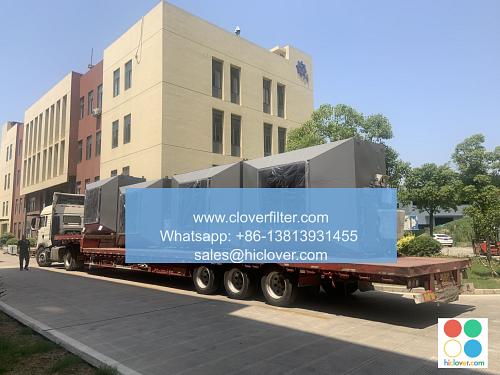Comparison of Automatic Roll Air Filters and Traditional Air Filtration Systems in Nanotechnology Cleanrooms

The increasing demand for nanotechnology products has led to the development of advanced cleanroom facilities. These facilities require highly efficient air filtration systems to maintain a contamination-free environment. In recent years, Automatic Roll Air Filters (ARAF) have gained popularity as an alternative to Traditional Air Filtration Systems (TAFS). In this article, we will compare the performance, advantages, and application areas of ARAF and TAFS in nanotechnology cleanrooms.
Introduction to Nanotechnology Cleanrooms
Nanotechnology cleanrooms are specialized facilities designed to manufacture and research nano-scale products. These cleanrooms require strict control over temperature, humidity, and air quality to prevent contamination. The air filtration system is a critical component of a cleanroom, as it helps to remove airborne particles, dust, and other contaminants that can affect the quality of the products.
Traditional Air Filtration Systems (TAFS)
TAFS have been widely used in cleanrooms for many years. These systems typically consist of a series of filters, including pre-filters, HEPA filters, and ULPA filters. TAFS are effective in removing airborne particles, but they have some limitations. For example, they can be expensive to maintain, require frequent filter replacements, and can generate significant amounts of waste.
Automatic Roll Air Filters (ARAF)
ARAF are a type of air filtration system that uses a roll of filter media to capture airborne particles. These systems are designed to provide continuous filtration, with the filter media being automatically advanced as it becomes saturated. ARAF offer several advantages over TAFS, including lower maintenance costs, reduced waste generation, and improved filtration efficiency.
Comparison of ARAF and TAFS
| Feature | TAFS | ARAF |
| — | — | — |
| Filtration Efficiency | High | High |
| Maintenance Costs | High | Low |
| Waste Generation | High | Low |
| Filter Replacement | Frequent | Infrequent |
| Energy Consumption | High | Low |
As shown in the table above, ARAF offer several advantages over TAFS. ARAF provide high filtration efficiency, while reducing maintenance costs, waste generation, and energy consumption.
Application Areas of ARAF and TAFS
Both ARAF and TAFS are used in a variety of application areas, including:
* Nanotechnology research and development: ARAF and TAFS are used to maintain a contamination-free environment in nanotechnology research and development facilities.
* Pharmaceutical manufacturing: ARAF and TAFS are used to control airborne particles and contaminants in pharmaceutical manufacturing facilities.
* Microelectronics manufacturing: ARAF and TAFS are used to maintain a clean environment in microelectronics manufacturing facilities.
* Biotechnology research and development: ARAF and TAFS are used to control airborne particles and contaminants in biotechnology research and development facilities.
Conclusion
In conclusion, ARAF offer several advantages over TAFS, including lower maintenance costs, reduced waste generation, and improved filtration efficiency. ARAF are a viable alternative to TAFS in nanotechnology cleanrooms, and are suitable for a variety of application areas, including nanotechnology research and development, pharmaceutical manufacturing, microelectronics manufacturing, and biotechnology research and development. As the demand for nanotechnology products continues to grow, the use of ARAF is likely to become more widespread, providing a cost-effective and efficient solution for maintaining contamination-free environments in cleanrooms.
Recommendations
Based on the comparison of ARAF and TAFS, we recommend the use of ARAF in nanotechnology cleanrooms, particularly in application areas where high filtration efficiency and low maintenance costs are required. Additionally, we recommend further research into the development of ARAF, to improve their performance and efficiency, and to explore new application areas.
Future Directions
The future of air filtration systems in nanotechnology cleanrooms is likely to involve the development of more advanced and efficient technologies, such as nanofiber-based air filters and membrane-based air filters. These technologies have the potential to provide even higher filtration efficiency and lower maintenance costs, and are likely to play a key role in the development of next-generation cleanrooms.

